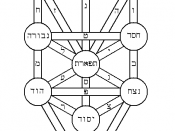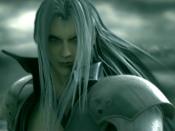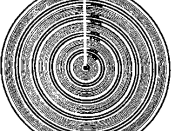The element of mysticism in Judaism is that which is commonly referred to as Kabbalah. Kabbalah is an area of Judaism that seeks to - as much as is humanly possible - comprehend the inner workings of God through analyzing the commandments of God, and the writings of Jewish ancestry. The Torah is Jewish law. This refers to oral law and orthodox texts such as the Hebrew Bible (Tanakh) or the first 5 books of the Old Testament. The Zohar is considered the most authoritative text of Kabbalah and is mainly concerned with the teachings found in the Torah. Kabbalah contains a system for analyzing the emanations of God and that is called the 'ten sefirot'. The Zohar aims to decipher much of the rules and regulations set down in the Torah, often using the ten sefirot, in order to find another level of meaning hidden within. Kabbalah often uses these sefirot to analyze passages found in the Tanakh.
Kabbalah also follows strictly the concept that God can not be thought of in images. This belief is supported in the Tanakh. To combat using images in thought, Kabbalah is strong in its use and analysis of numbers.
God has made limited understanding and knowledge of God possible by creating a realm of 'hanhaga'(Leiberman 2000:2). This is a place for interaction between humans and God - for human's sake, bounded and defined. It is within the realm of hanhaga that the only acceptable name for God (who is ineffable), Ein Sof is found. Ein Sof means without end, and it is from Ein Sof that the ten sefirot emanate (Leiberman 2000:2).
The first of the ten Sefirot is keter, aptly translated as the crown (Leiberman 2000:3). Keter is a cause but is never an effect. It does not follow from anything...


